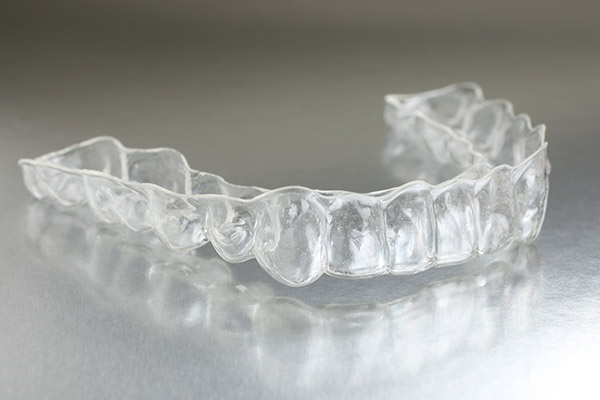Wearing a Retainer After an Invisalign Treatment

Finishing the last set of Invisalign® aligners is often an exciting moment for patients, especially when the desired results have been achieved. Although people often prefer aligners to traditional metal braces since the clear trays are less visible on the teeth and do not require any eating restrictions, many people feel relieved when treatment is over and the trays no longer need to be worn. While there is every reason to celebrate once finishing with aligners, the process is not completely over, and most patients will need to wear a retainer to help maintain the current state of the teeth and avoid shifting.
The importance of wearing retainers after Invisalign®
Many patients who choose Invisalign® to help straighten teeth have become accustomed to wearing trays over the teeth and are able to easily transition to retainers. Here is some information on how retainers keep the teeth in place after treatment is over and how long patients typically have to wear a retainer for.
The retention phase
While wearing Invisalign®, the teeth are in what is called the active phase of treatment. This is the part of the process where pressure is put on the teeth to break down the surrounding bones and stretch the periodontal ligaments, which is essential for moving teeth to the desired position. Once this phase of treatment is over and this pressure is taken off the teeth, the bones will need time to regenerate, and ligaments will need to shrink back to normal during what is called the retention phase. The purpose of wearing a retainer immediately after treatment is to keep teeth in the desired position.
Wearing retainers
Most often, patients are instructed to wear a retainer full time, except during meals, for approximately six months. This time period can be shorter or longer depending on the patient’s particular needs. This is to help keep teeth in place during bone regeneration. After this time period is over, patients are told when it is acceptable to start only wearing retainers while sleeping. This helps prevent shifting that occurs with aging.
Caring for retainers
There are several different types of retainers that are sometimes used after aligners. Some patients might need bonded permanent retainers, which are fixed to the back of the teeth using a special glue. One disadvantage of this type of retainer is that the fixed wire can make daily brushing and flossing more difficult, so it is important to take extra time to brush around the wire to help prevent any plaque or food buildup. Other patients might only need removable retainers, such as Hawley wire or plastic retainers. These retainers should be removed during eating and brushed daily.
Conclusion
After finishing Invisalign® treatment, many patients might wish to simply take off the last set of aligners and enjoy straight teeth without ever having to wear retainers. However, wearing a retainer is a required last step of the process and helps keep teeth from shifting back to the original, pre-treatment position.
Request an appointment here: https://www.dentistofvisalia.com or call Visalia Care Dental at (559) 975-1213 for an appointment in our Visalia office.
Check out what others are saying about our services on Yelp: Read our Yelp reviews.
Related Posts
When you visit your dentist, preventative dental care should be at the forefront of your mind. Nobody enjoys getting extra work done because of the cost and time and because it can result in some uncomfortable procedures. Cavities, gingivitis, and other diseases are preventable with the correct oral hygiene. X-rays and cleanings done at your…
Dental laminate treatments offer a minimally invasive solution for patients looking to enhance their smiles. Both dental laminates and veneers improve the appearance of teeth by covering imperfections such as discoloration, chips, and minor misalignments. While these treatments serve a similar purpose, their differences impact durability, preparation, and overall aesthetic outcomes. Understanding these distinctions can…
Preventative dental care is one of the most important ways to take care of your teeth and gums.Having a healthy smile can give you more than a great first impression. Taking care of your teeth is important in maintaining your overall body health as well. If you don’t take proper care of your teeth, you…
Fluoride treatments are very important in preventative dental care. Every patient wants their dentist to provide them with all the necessary tools to keep their smile bright and white. You go to the dentist twice a year as recommended and brush and floss your teeth regularly.Doing your part in your oral care routine only goes…
